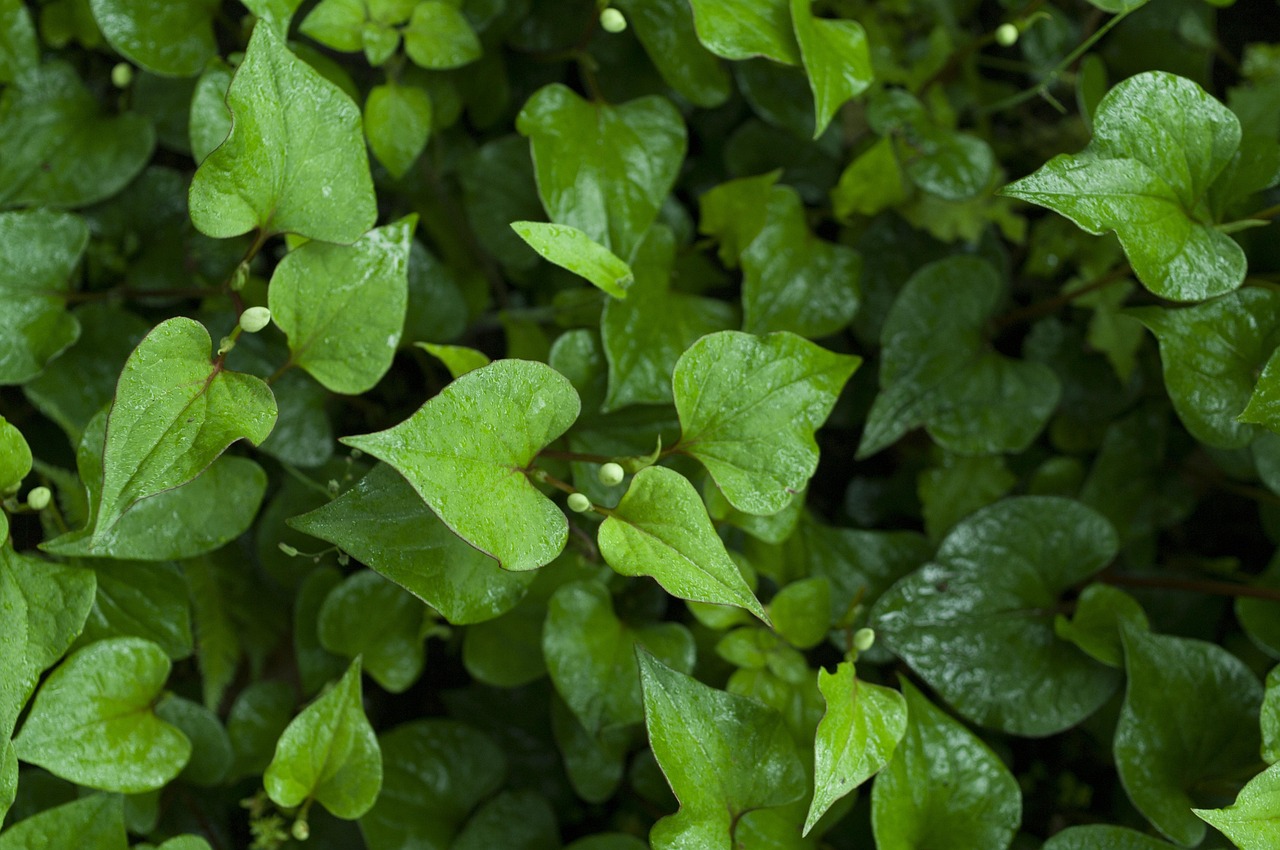
Fish Mint
Houttuynia cordata
Basic Information
🌿 Family: Saururaceae🗺️ Zone: 5-11
Other Names:
- Chameleon Plant
- Heartleaf
- Rainbow Plant
- Chinese Lizard Tail
🌡️ Ideal Temperature : 60°F – 85°F
🔥 Heat Tolerance: Up to 95°F
❄️ Cold Tolerance: Down to -20°F
🌱 Type: Perennial
Layers
- Ground
- Aquatic
Functions
- Edible
- Medicinal
- Ground Cover
- Aquatic
Pests
No pests associated with this plant.
Companions
- Marsh Gladiolus
- Lady's Mantle
- Meadowsweet
Plants to Avoid
- None noted
Description
Fish Mint (*Houttuynia cordata*) is a herbaceous perennial plant native to Southeast Asia, growing to a height of 0.6–1 meter (2–3.3 feet) and spreading up to 1 meter (3.3 feet). It features heart-shaped leaves, 4–9 cm long and 3–8 cm broad, which often develop red and yellow splotches, giving the plant its 'Chameleon' nickname. The plant produces small greenish-yellow flowers borne on terminal spikes 2–3 cm long, surrounded by four to six large white basal bracts, typically blooming in the summer. The leaves have a unique taste due to the presence of decanoyl acetaldehyde, often described as 'fishy,' and are used in various Asian cuisines.
🌞💧 **Sun and Water Requirements:**
Fish Mint thrives in moist to wet soil and can tolerate slight submersion in water, making it suitable for aquatic gardens. It prefers partially to fully sunny locations but can also grow in shaded areas. Regular watering is essential, especially in drier conditions, to maintain soil moisture.
✂️🫘 **Methods to Propagate:**
Fish Mint propagates vigorously through its rhizomes. Division is the most common method of propagation, best performed in spring or fall. Care should be taken to control its spread, as it can become invasive in garden settings.
🧑🌾👩🌾 **When to Harvest:**
Harvest Fish Mint leaves throughout the growing season as needed. For culinary uses, young, tender leaves are preferred for their milder flavor. The roots can also be harvested and used in various dishes.
Purpose
- **Edible:** The leaves are used as a fresh herbal garnish in salads, salsas, and spring rolls. They are also cooked with other vegetables and fish in various Asian cuisines.
- **Medicinal:** Traditionally used to treat digestive issues, fevers, coughs, and insect bites. However, caution is advised due to potential allergic reactions, and it should only be used diluted in teas or as external pastes.
- **Ground Cover:** Its vigorous growth habit makes it effective as a ground cover in moist areas.
- **Aquatic:** Suitable for planting in moist soil or slightly submerged in water, making it ideal for aquatic gardens.